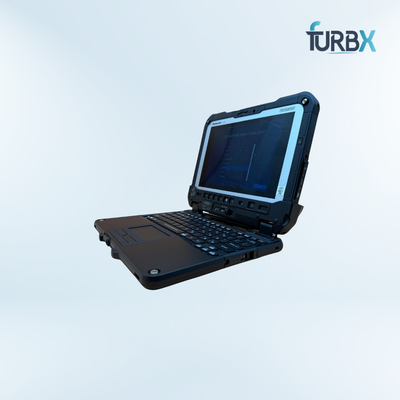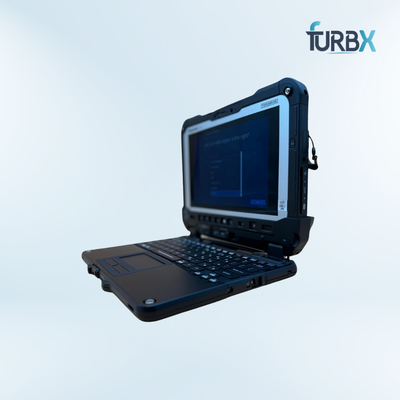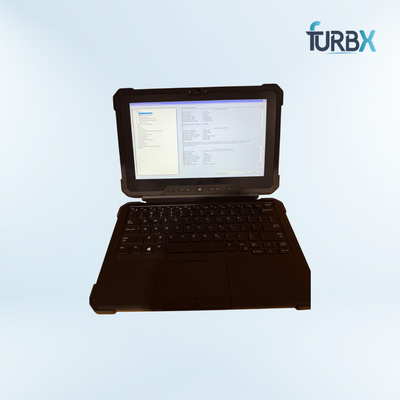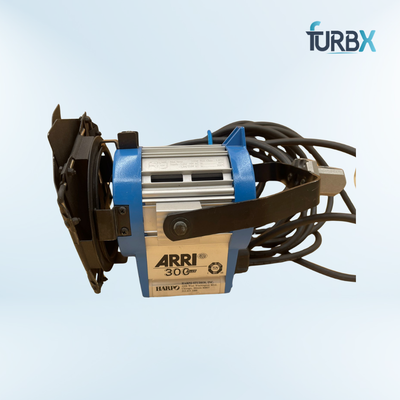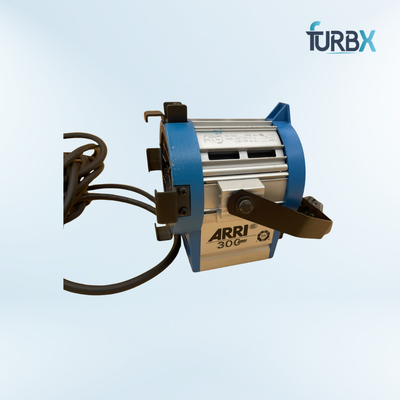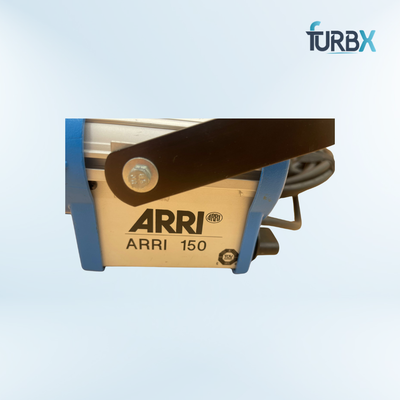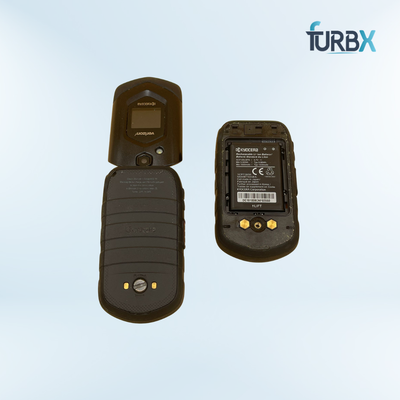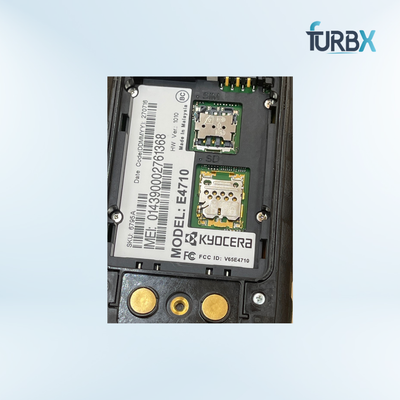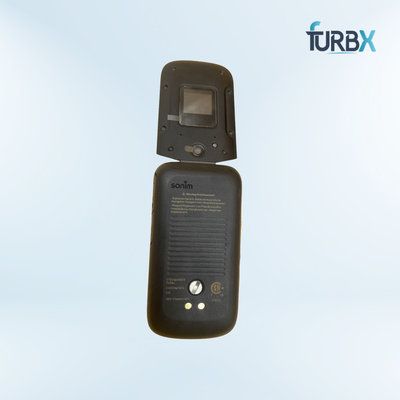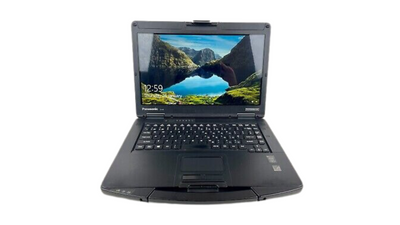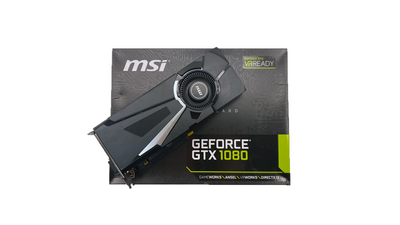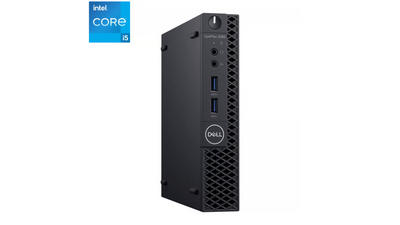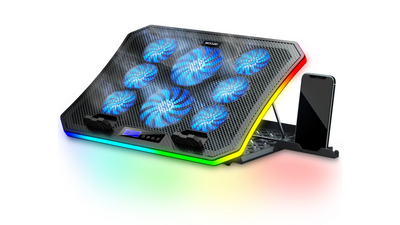No surprise here: However, the best determining criterion in choosing the best gaming laptop will have to be the amount of money you have to spend. Some gaming systems have better parts than ordinary notebooks for the mass market, and, of course, the cost will be higher, but, all the same, the choice within this segment is very large, and it ranges from several hundred dollars to $4,500. Small/mini laptops for gaming can be purchased from $800 and up to $1,250. In exchange you get a setup that can achieve 1080p with settings down in most games or max settings in low-graphics-demanding games. Storage will most likely be of a small size, such as an SSD drive; a hard drive means the smartphone is old and should be avoided. Shall the hardware allow it, an SSD will make a dandy boot drive.

Want something better? Midrange systems will provide better gaming at higher or maximum settings on a somewhat better 1080p screen (which should support high framerates; more on that below), and they should incorporate VR support. Such models will cost between $1250 and $2000.
Top-shelf systems, on the other hand, should lock in a stable 60 fps at 1080p with all graphical features turned on without fail and with a high refresh rate panel. They can even let you play at 4K resolution if your screen allows it to happen so. There are also conditions that a high-end model should be able to drive a VR headset and can support other external displays. Add to this capacious PCI Express SSDs, and these machines are generally above $2,000, moving closer to $3,000.
However, it is not out of the realm of the possible to spend as much as you’d like for a gaming rig, and depending on just which components are included, some of the 18-inch big boys can easily reach $5,000. Big, beautiful screens normally invite big prices and are normally combined with the highest-end solutions.
A few laptops in this class come with QHD (2560-by-1440 pixel) or 4K panels, an additional hard drive alongside the SSD, and highly efficient cooling fans as extra features. However, thanks to technological improvement, more systems are even comparatively slim and transportable. When it comes to laptops in this tier you get high-performance, thin-and-light laptops or the most possible power in a slightly thicker frame.
What is the most important factor for a gaming laptop?
When you have finally set your budget, it still remains difficult to know which components are the most important. If you care for your wallet, you need to make hard decisions on which components they should cut on and which ones they should push on between the GPU, the CPU or processor, the memory, the storage, and the display. Next off, we will cover all of the parts below, in terms of where to spend your cash.
1. GPU
This makes sense to ask as; “What is the right GPU for a gaming notebook?” But that’s not quite the right question to ask for your shopping search. The "best" GPU overall will always be the fastest, most expensive AMD or Nvidia has to offer, so you should ask: “What is the best GPU that I should use for my target gaming”? To be considered a gaming laptop, we only consider a gaming laptop with a dedicated graphics card from Nvidia or AMD (or, in a considerably rarer case, Intel Arc).
A quick crash course for the uninitiated: The numbers after ‘GT ‘ in a GPU series indicate the level of power of the GPU; the higher the number the more powerful. For instance, an Nvidia GeForce RTX 4080 will provide greater efficiency in frame rates and graphical output than an RTX 4070 and so on down the chain. The “40” describes the generation, so the latest GeForce 40 series is better than the previous 30 series; the GeForce RTX 4080 is the new version of the RTX 3080, and so on. Right now, Nvidia rules the roost, and it is developing standalone mobile GPUs based on the Ada Lovelace architecture at the moment, although there are some older cards based on the Ampere architecture (released in 2021).

Ampere GPUs go by the GeForce RTX 30 series name (like the RTX 3070; however, its adoption has been mostly replaced by the 40 series. The later come on the desktop in the year 2022, while the laptop with RTX 40 series Graphic Processing Units, or GPUs, started showing up in the market early last year. You can still occasionally come across a GeForce RTX 3050 or 3060, but it will most likely be in a basic or non-gaming laptop design; it is nearly all Ada at this point.
Unlike the prior ones, Nvidia’s GeForce 30 and 40 series GPUs are branded as RTX, an endorsement of the ray-tracing feature that provides better graphics with ray-tracing-capable games. This is a beautiful and detailed real-time lighting special effect but sadly very heavy to render. >>See our guide on enabling PC ray tracing.
Along with a technique called DLSS, higher-tier GPUs can further enhance ray tracing at resolutions in current games. Nvidia is constantly refining this technology, and they have baked the enhancements seen in DLSS 3 into its modern 40 series GPUs. As it was the case with, for example, the Asus Rog Strix Scar GL10, demanding games might not reach 60 fps on 4K and with ray tracing on. But it is much more reasonable for a laptop to maintain both a high frame rate and high resolution with a top-end GPU’s DLSS 3 and ‘frame generation.’.
Ampere and Ada Lovelace laptop GPUs are not 1:1 corresponding to the ones on desktop counterparts, but performance is more than adequate. We’ve seen some significant real-world performance differences between the same GPU in one laptop versus the same hardware in another, which primarily depends on the power or wattage that laptop OEMs provide to the GPU. To see why this is, read our mobile Ampere testing article. This makes laptop shopping a bit more complex than just looking at the spec sheet for the GPU model of the specific laptop you are to buy. Stress testing is now critical for our hands-on effort to evaluate our system.

In the case of the model hierarchy, only notebooks with RTX 4080 or RTX 4090 GPUs are exceptional in all tested resolutions, and we even have the RTX 4070. As mentioned before, DLSS is mandatory when increasing the resolution for ray tracing, but the 40 series are way more powerful than the 30 series for such scenarios. The RTX 4060 is a rock-steady 1080p gaming choice for laptops, and it is available in laptops at these price points that are either on the higher end of the budget laptops or the lower end of mid-tier laptops.
Nvidia is ahead of the competition in graphics to this date, and although its main competitor AMD is also picking up pace, More gaming laptops are now coming with Radeon RX GPUs; AMD unveiled its new generation of mobile GPUs, the Radeon RX 7000, early last year, but we saw very limited units of those all year.
An AMD GPU can be coupled with an Intel CPU, but we are seeing increasing trends of a combination of AMD graphics with an AMD CPU. For instance, Dell and MSI offer only a rather limited number of laptops with an AMD CPU together with an AMD GPU.
With all the above complexity, however, some basic conclusions regarding graphics performance can still be made. Modern discrete card prices range from the mid- to high-end, yet today it would suffice to it, to play the newest AAA game titles at 1080p with graphics settings set to high, all while being sufficient as a GPU that powers VR play. While the RTX 3070 and 3080 ensured that 1440p gaming mainly had no stutter, the RTX 40 series is making ultra-HD 4K gaming on laptops more realistic than ever.
2. CPU
You guessed it: we have no one optimal choice for a computer user who asks himself, ‘What CPU do I need for a gaming laptop?’ either, still the baselines are more definitive. Last year, we saw the release of Intel’s 13th Generation or “Raptor Lake” chips and AMD’s Ryzen 7000 line that dominated most of our picks for the year and even the first quarter of 2024. When testing our first performance samples of the Core i9 Raptor Lake chips and Ryzen 7000 “Dragon Range” chips, which we followed in the next year.
Intels Core Ultra ‘Meteor Lake’ and ‘Lunar Lake’ chips with onboard AI were also introduced To be used in some gaming systems, they will not be present in most systems yet. This is why Intel’s Raptor Lake Refresh H, HK and HX processors, labeled as Intel’s 14th gen processors will be the CPUs likely to be features in gaming laptops of 2024 and will dominate in larger and might powerful gaming machines. We first came across these at CES 2024 , and reviewed our first such chip with the 2024 version of the Razer Blade 16. You may have heard of Copilot+ PCs and Qualcomm’s Snapdragon chips but these AI processors are most definitely are not for gaming yet.

Many of the laptops featured her have Intel Core i7 processors with the most expensive models featuring Core i9 CPUs. Some cheaper systems may cut down to Core i5 processors.
Thus more cores and higher clock speed brings better optical and co physical efficiency and greatly enhanced performance on multi-threaded tasks such as video/audio but it is not as crucial for gaming. Gaming typically doesn’t increase as much from multiple threads as many media tasks do but it definitely helps.
If there were the options for, say, a deluxe CPU versus puffed-up GPU however, it’s the graphics, please. For example, we’d say that it is better to buy a Core i5 instead of a Core iT, if the money saved will be used to buy an Nvidia GeForce RTX 4060 instead of the RTX 4050. The fact that gaming is your primary usage for the computer, means that it would make more sense to spend your money on the GPU.

Pentiuam i5 processors can be found in low-cost game oriented laptops while you can locate i7 H, HQ and HK within mid-point gaming laptops. H-series processors are higher power and are normally found in high-end gaming laptops while the Core i7 U-series are low power chips meant for thinner, lighter and generally non-gaming laptops. Laptops for gaming, the largest and the most costly, work with Core i9 H-series processors and are additionally better for media. The branch-off Core Meteor Lake processors remove the “i” construction but still have their own Ultra 5, Ultra 7, and Ultra 9 versions, plus designations that include the H series and the U series.
On the other side, you have the AMD side which we discussed earlier in this discourse. For a long time, these chips were a pale imitation of Intel’s product, though today Intel is pulling AMD’s ear to do the same with performance. In the present AM unnecessary Ryzen 7000 and 8000 have more severe rivals in the form of Intel’s 13th and 14th generations. Any Ryzen 7000 or 8000, Intel’s or 13th or 14th Gen, should be adequate gamers in most scenarios at all.”
3. RAM:
For what memory amount should you pay? When using windows for purposes of gaming, be specific to at least 8 GB of RAM. As a practical matter, no actual gaming model will arrive with anything less. That should help when you flip back and forth between your gameplay window and, say, your messaging center, but we’d hold off on researching the tips, as every added browser tab means more RAM has been used.
Storage of 16GB is beginning to be offered across the board for almost all laptops except those in the low-end of the laptop market. By this, it is possible to play a few rounds of a game, send messages, work with several sites, chat with friends on webcam, and watch streaming video at the same time. A midrange gaming laptop should be okay with 8GB of RAM but some new gaming laptops don’t have RAM upgrade options. You may be locked into the amount of memory that you have ordered. When it comes to that investment-grade gaming laptop, 16GB of RAM has become the minimum benchmark; for most people who are not diehard streamers CPs or multitasking, beyond that is redundant. Especially these days, the latest high-end gaming laptops that you can find in the market are those that are bundled with 32 GB RAM and more which are more or less additions that help you multitasking and running most of your games in 4k mode.

(Credit: Joseph Maldonado)
4. Screen
This aspect has become increasingly complicated for gaming laptops, really boiling down to two questions: Often there is asked a question, «What is the best size for laptop screen?». and “What refresh rate is optimal, if not obligatory”?
First, let’s discuss display size, and it should always be mentioned as the distance between opposite corners. A traditional form factor for a gaming laptop has been 15.6-inch screens with 16-inch screens beginning to phase 15. It is possible to find models with bigger screens, although the weight will undoubtedly rise to over five pounds questioning portability.
The manufacturers that declared the use of the 18-inch laptops at early last year include the Alienware, the Asus and the Razer. We looked at the first of these, the Asus ROG Strix Scar 18, and there have been many since then. The boom of slashed gaming laptops, considered as super-portable laptops, commonly measured at 14 inches and below, has also arisen. As such, the screen sizes are wider than ever with 14.5, 16, 17.3-inches and finally the 18 inches.

In terms of resolution, a full HD (1,920-by-1,080-pixel in 16:Which could already be a native-resolution 9:16 screen, no matter how large today’s minimum displays are. One thing to note: Manufacturers have shifted courses to using 16:10 displays, while it offers a bit more in terms of the height compared to width, it takes little space more. Therefore, you will find screens of comparable full HD resolution with a somewhat different number of pixels (1,920 by 1,200) and the same with other resolutions as well.
In terms of resolution, a full HD (1,920-by-1,080-pixel in 16:Today’s minimum across all screen sizes is a native resolutions 720 x 1280 pixels (9 aspect ratio) screen. One thing to note: Laptop OEMs have switched to 16:10 panels as they offer a couple more lines of display real estate for not much width increase. That is why you will have exactly the same physical full HD resolution screens with a slightly different nominal pixel count of 1920 by 1200 and everything that relates to other resolutions as well.
Because they require the most potent GPUs for smooth gameplay at native resolution, gaming laptops with 4K screens (3,840 by 2,160 pixels in 16:9) are still considered an exception and still too costly. Even the high-end and most expensive GPUs are incapable of providing playable framerates for complex game animations at 4K so if all you’re going to use is your monitor to play games, then you are better off getting a 1080p monitor.
Of course, both 4K gaming capabilities of the RTX 4080 and 4090 are far beyond any laptop GPUs, but we wouldn’t recommend chasing 4K in laptops unless you are ready to pay for it. The screens does do look good though when they are sometimes accompanied by OLED technology which they should be. QHD is mostly a better combination of contemporary high-performance GPUs on laptops.

Now, let us turn to discuss the refresh rate issue. Refresh rate is a measure of how many times a screen can refresh itself per second or how “fast” a screen can paint pictures. This will always be a relatively large number measured on the hertz (Hz) scale.” Refresh rate operates in conjunction with a video game’s frames per second, or fps; the Hz of your screen is the maximum for frames that actually can be displayed on the screen. These together determine how smooth a game looks in practice: The computer’s central and graphics card can run a game at a given frames per second, and your screen requires the Hz to show the images at the same frequency.
Like with GPUs, there are questions where your target refresh rate is for what you are doing in game. In the past, the kind of power seen in a GPU like the RTX 4070 would seem excessive for gaming at ‘only’ 1080p, but several new factors can take in that extra ability. A high-refresh-rate screen has become standard in any new gaming laptop, as it enshrouds the three tall figures with all the soaring frame rates to smoothen out perceived performance. The card’s performance will also depend on the capability to get the most from a high-refresh panel with intensive games. Some of the machines you can tell that they are like those by the marketing speak of something even like a 144Hz, 240Hz, or 300Hz-plus display. A standard notebook is normally a 60Hz panel, but the new gaming models, and all the new models are 144Hz and above.
A 144Hz panel is now standard, and we’re also getting some 240Hz, and even 360Hz only in expensive laptops they all can show more than 60 frames per second response rate for example, up to 144 fps on 144 HZ panel. This makes the gameplay look a good deal smoother but in such situations only the higher end GPUs are capable of pushing those boundaries. Furthermore, the other mentioned ray-tracing techniques (real-time lighting and reflection effects) are computationally expensive to process, and as more video games adopt it, the more you will wish to turn them on.

For that reason you get several reasons to go for a high-end GPU even if setting the resolution up to full High Definition (1920×1080) does not seem to be a very demanding task in your eyes. On the low end, DLSS can assist lower tierDiffuse hardware like the RTX 3050 or 4050 run or enable ray-tracing for instance with limited compromise so you’re not entirely out of luck if you can’t swing for the high chip sets. This can be said that but the DLSS support itself is not universal, and yet, it is integrated in the increasing quantity of games.
Nvidia’s G-Sync and AMD’s FreeSync technologies are much more realistic. They assist in enhancing the quality of the gaming experience and bring down the map of frames by letting the laptop screen redraw what is displayed a number of times in accordance with the output of the GPU rather than the fixed screen. If you want to get one of those images 100 percent perfect you are going to have to find support for one of those technologies. These technologies are collectively referred to as ‘‘adaptive sync,’ but they are gradually becoming more popular and they are frequently observed in high-end machines, and G-Sync is more frequent in laptops than even all the other types of adaptive sync.
5. Storage
How much should one get in LSSD in a gaming laptop? These days, close to 100% of laptops ship with an SSD boot drive and more than three quarters of them do not include any spinning hard drives. The SSDs reduce the boot time, wake-from-sleep time, the time it takes to start a game, and loading a new level time. That leaves older laptops for which the hard drive will still remain the boot drive.
While today’s enormous gaming notebooks of various brands offer Hybrid options, it was usual to come across a tiny 256GB SSD boot drive alongside a comparatively enlarged 1TB+ HDD for nearly all your games. You may still find this combination, but as higher-capacity SSDs have become a thing, SSDs have become the default. A 512GB SSD is now mainstream whereas, gaming laptops on the cheaper end begin at 256GB of storage, ultraportable gaming laptops with huge Ass SSDs will have 1TB or above.
Of course, increasing the amount of SSD space will undeniably make the price cut even higher, but it might be essential nevertheless, with today’s large game ust size, thus sourcing wisely. We suggest, if possible, start with at least a 512 GB SSD; you will find that your library quickly consumes your capacity. If you are offered 256GB, we would really recommend going for more space if you’re able to unless the user specifically only wants to download smaller indie games for example. SSD offering a capacity that is a tad too low will have you constantly swapping games in and out of this drive.
6. Battery
The problem is that high-quality components are generally more power hungry, so do not expect to take any of these gaming machines very far from the wall socket too frequently. Current gaming laptops average has evolved more or less in terms of battery duration but it is still not considered a lasting breed. While many will now deliver between five, six or seven hours, we still identify more potent laptops manage only a two to three hours in the same test. It is also something which you cannot especially inform when buying a laptop without reference to our ratings.
And this is besides even when playing games with battery. Doing so will drastically decrease the charge on your laptop, so if you are playing on battery power you will be looking to plug in soon . Between the fact that you are going to buy this laptop to play games mostly and a battery runtime that is going to be shorter even when you are not gaming, battery power simply is not one of the considerations you will.make. Gaming laptops fall shy of longer battery life and while we have at least one gaming pick on this list of our overall best battery life laptops, it is not the strongest suit of gaming laptops.
Buying the Best Cheap Gaming Laptop
If you’re looking for a gaming system on a strict budget (which for the purposes of this comparison is anything under $800 and up to $1300) there are going to be some compromises to be made. Getting as much power as possible for the amount of money you are willing to spend is the idea, but you have to know that some of the components won’t match the better laptops you will find while window shopping. However, $1,200 is a maximum price for which some buyers can get a hi-end gaming laptop and secure an effective system at the same price. You can also just access our side by side comparison of the best budget gaming laptops.
The biggest cut will be in the graphics as the dedicated graphics chip is one of the most expensive commodities in a machine and central to the performance of a laptop for gaming. The graphics chip can single out more often than not the kind laptop that is in front of you, so be observant on that section. Fortunately, the GPU options of current computers for less performer classes are quite robust.

Old budget kits were fitted almost exclusively with those cost-effective Nvidia GeForce GTX GPUs we have discussed above. The GeForce RTX 3050, RTX 3050 Ti, and RTX 4050 have replaced these inside laptops for as low as $799. These are now the entry products into the market.
This makes the RTX 4050 as the new budget and you can look out for discounts more on the previous 30-series laptops if you want to go even lower. Even on the entry level, with most of these GPUs, you should be able to game at 1080p, though not at ultra in the latest titles, which is par for the course, and all of these should provide at least decent VR experience if you’re into that.
Processors is the second most comprehensive factor differentiating the notebooks. As you may know, in budget segment you are not going to receive high-end CPU like Core i7 instead you will be getting Core i5. Nevertheless, some of the advantages of an i7 machine are not significant for gaming but more useful in video and other productions; hence an i5 will suffice. In the last year or two, more AMD Ryzen CPUs have been used in cheap general use laptops more than cheap gaming laptops although they have been used in some high end or ultraportable gaming laptops.
Substituting AMD GPUs for Nvidia GPUs, AMD GPUs are much less incorporated into intrinsic low-cost gaming laptops. You will see the increase in all-AMD laptops than before, but not many will be cheap laptops.
The only thing that I would expect to be significantly below the more expensive machines is the graphics card and processor; the other components should be probably closer to more expensive machines. Most of new gaming laptops has at least SSD boot drives, although they may be of little storage size. The display will almost certainly be 1080p, although 1,366 by 768 pixel panels are now limited to the most cut-rate non-gaming laptops. The RAM will likely be capped at 8GB in most budget laptops, however you will find more ideal 16GB laptops in this category.
What Else Do You Need to Up Your Game?
Advanced ports, for instance, USB Type-C and Thunderbolt 4 are useful today, and will be more valuable in the future, however, hope for least two regular-formed (prescribed as ‘Type-A’) USB 3.0 ports with the goal that you can associate an outer mouse and a hard disk drive for your put away media records. There’s also a ton of options such as RGB-Key and chassis lighting, performance modes in software and network ports for downloads or online gaming through ethernet.
Finding the right loadout of ports to accommodate a VR headset if you want to attach it to your rig. You are going to require an HDMI or DisplayPort video out and as you can see the headset may require both ports hence the USB ports for the hydra-head of cabling. Other video ports like the Display Port or the mini Display port (sometimes implemented through a USB-C port) will come in handy if you intend to play games on an outside monitor but if your computer’s screen is relatively large you may not have use for them.
Which Brand Is Best to Buy a Gaming Laptop From?
Our choices vary across a wide range of manufactures, however, we do get the same brands repeating in our lists frequently. Of these, some are gaming specialists while some are not. At any given time, you should expect some systems from the largest manufacturers because they never limit themselves to offering one or two options or prices. These include Acer, Asus, Dell, and lenovo amongst others. The last one, especially, has been providing rather nice value in the gaming segment in the recent period.
Some manufactueres that This can mainly be attributed to some of the more specialist brands that continuously deliver very good gaming machines, such as Alienware – a Dell sub-brand – Gigabyte, MSI, and Razer. Of these, particularly, Razer machines include a high price ratio and better quality.
Ready to Buy the Right Gaming Laptop for You?
Are you more ready now to go for the purchase than before? We hope so. To get a clearer idea about which gaming laptop is best for you, our breakdown of all make and model specs of all the above top-pick machines should be a big help. Game on!




